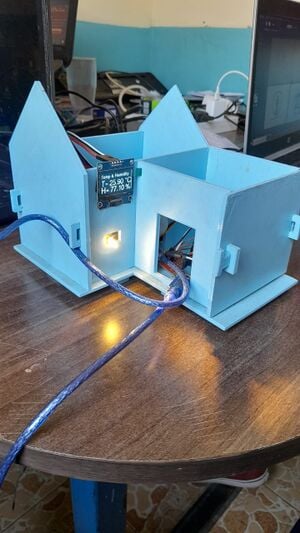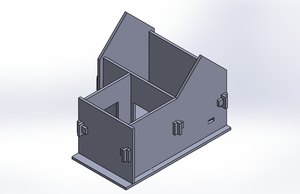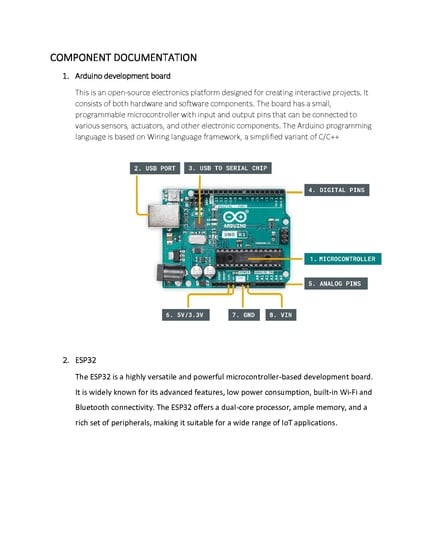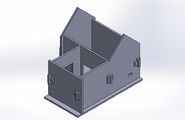
This is an IoT (Internet of Things) project that shows how the technology can be used in a home environment to make new useful systems and also improve on the existing ones.
Background[edit | edit source]
As a result of the ongoing war in Ukraine, a lot of kids have experienced a disruption in their normal school routine. It has hindered many of them from getting quality education that they require. This project aims to help bridge the gap by offering practical training to equip them with valuable technological skills, specifically, IoT. It offers hands-on learning in an engaging and enjoyable way. They get to build a smart-house model that has an intruder detection system, temperature & humidity recording , among other things.
Benefits and criteria[edit | edit source]
The benefits of making this project are:
- It helps bridge the current gap in the education sector.
- It allows hands-on skill acquisition.
- Creates awareness on modern technological trends.
- Although we used 3D printed parts, you can use any suitable material available within your locality e.g cardboard or box.
The criteria under which this project was designed were:
- Easy assembly
- Portability
- Design flexibility
Introduction to IoT[edit | edit source]
Material, Equipment & Skills[edit | edit source]
Materials[edit | edit source]
- PLA filament
- Arduino Uno
- DHT22 sensor
- PIR sensor
- Buzzer
- Jumper wires
- LED module
- Bluetooth Module
Equipment[edit | edit source]
- 3D Printer
Skills[edit | edit source]
- Arduino circuitry
- 3D modelling
Assembly instructions[edit | edit source]

- To build the house model, download and 3D print the CAD files. There are 8 printable CAD files.
- Assemble the house structure by fixing the parts together then Integrate the development board and sensors to complete the smart-house.
File:Arduino codes circuit diagrams.zip
Video tutorial[edit | edit source]
https://drive.google.com/file/d/11nYiJRWctU-l-Y_XX9XLm5zNGgduJEY1/view?usp=sharing
Gallery[edit | edit source]
-
3D House Design
-
Assembled Model
-
Backside
-
Floor Base
-
Front Side extension1
-
Front Side extension2
-
Front Side
-
Side End 1
-
Side End 2
-
-
-
-
-
Contact details[edit | edit source]
Rabin Otieno rabin@fablabwinam.org















